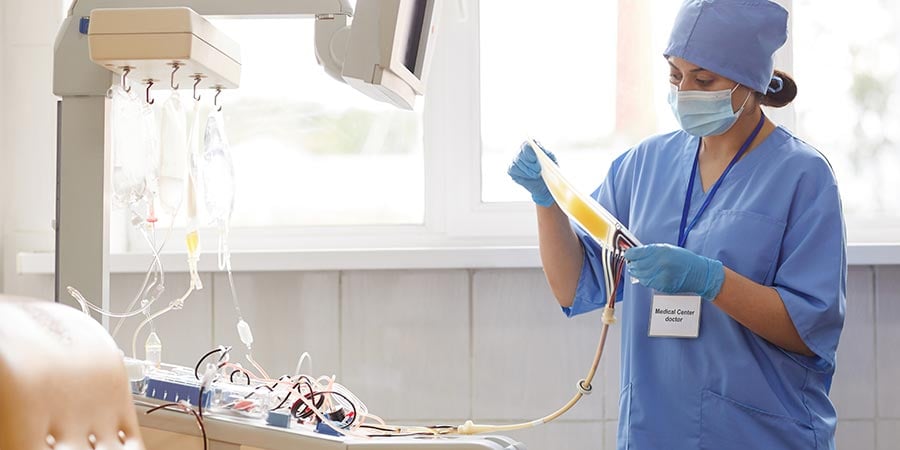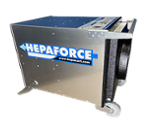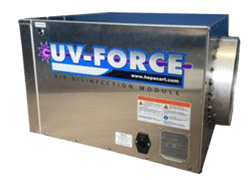Share this
How’s the Air Quality in Your Urgent Care Center?
by HEPACART on May 26, 2021
Competent facility managers know how important indoor air quality is to occupants’ health.
Is there any facility manager who hasn't heard of sick building syndrome? If you can't remember a time when that wasn't a thing, it's probably because the World Health Organization (WHO) coined the term in 1986 after Congress told the U.S. Environmental Protection Agency (EPA) to focus on indoor air quality (IAQ).
When the topic is what you breathe indoors, there's a big difference between healthcare and non-healthcare facilities.
Typical indoor pollutants in office buildings tend to come from building materials and outdoor environments:
- Carbon monoxide
- Particulate matter
- VOCs
- Humidity
- Formaldehyde
- Radon
For a healthcare facility such as an urgent care center, IAQ takes on a larger meaning. In addition to the factors listed above, which can apply to any building, healthcare facilities have another significant pollution source to worry about — the patients, who discharge fluids and aerosols containing viral and bacterial pathogens.
Not only are patients the source of airborne viruses and bacteria, but they are also uniquely vulnerable to pathogens that don't bother healthy immune systems, such as common mold spores.
Let's say a patient comes into an urgent care center for treatment of an injury. That patient just happens to have severe asthma triggered by something in the air at your facility. Or the patient has a compromised immune system and picks up a healthcare-associated infection (HAI) from viral exposure. Obviously, this is an unfortunate scenario that must be avoided for the sake of patients.
But aside from the fact that it's the right thing to do, preventing patients from picking up HAIs has carried financial incentives since 2008, when new Medicaid regulations began denying payment for treatment of some HAIs.

So, let's take a look at some things you can do to keep indoor air quality at its best in your urgent care facility, starting with the basics: heating, ventilation, and air conditioning.
Maintain & Upgrade Your HVAC System
Before thinking about extreme measures, start with the basics. Are you following a routine maintenance schedule for filter inspection and replacement? What about air duct cleaning? How certain are you that drip pans and coils have not become breeding grounds for mold?
Beyond regular maintenance and inspection, have you reviewed your HVAC system's design to optimize it for healthcare? Functions such as ventilation (the amount of outside air that's mixed in) and airflow (direction and velocity of conditioned air) should be reviewed by a certified, licensed HVAC provider, who can cover such things as:
- Directing air from clean to less clean areas
- Making sure there's a minimum 30-foot distance between exhaust outlets and air intakes
- Setting temperature between 70 and 75 degrees F (21-24 degrees C)
- Adding equipment to regulate humidity in the "Goldilocks Range" of 40-60%
- Taking steps to avoid contamination by molds and fungi, such as minimizing energy-saving "off" cycles
- Developing a maintenance plan based on your facility's particular environmental conditions

Also, consider upgrading filtration since adding high-efficiency filters can reduce pathogen-carrying dust and other pollutants throughout the building. Filters with a Minimum Efficiency Reporting Value (MERV) in the seven to thirteen range (with 16 being most efficient) can be nearly as efficient as HEPA filters, says the EPA. The only caveat is to check with your HVAC consultant whether the greater airflow restriction of more efficient filters requires modification of blower speeds.
By the way, if regular deep cleaning is not already done in your facility, it should be. Dust and dirt that contains pathogens tend to settle on surfaces, ready to be stirred up by human activity. Your HVAC system can only filter out what is airborne, but it's important to minimize what is not in the air, too.
Another potential addition to an HVAC system is UV germicidal irradiation. To accomplish this, ultraviolet lights can be mounted in air ducts and coils. There's been much advancement in technology recently, so ask your HVAC consultant for recommendations.
Use Differential Pressure
Differential pressure is the surest way to keep infectious viruses and bacteria from spreading throughout your healthcare facility when patients with contagious illnesses are treated. You can create isolation rooms for treating measles, coronavirus, tuberculosis, and influenza using negative air machines with HEPA filtration. Safe entry and exit can be facilitated by an AnteRoom that creates a vestibule outside of the room door. With air pressure inside lower than outside, pathogens can't leave the room. While negative pressure isolation rooms are more commonly used in hospitals, the COVID-19 pandemic has driven the adoption of differential pressure in other healthcare settings, such as urgent care centers. It is certainly worth thinking about as a means of keeping patients and staff safe.
While negative pressure isolation rooms are more commonly used in hospitals, the COVID-19 pandemic has driven the adoption of differential pressure in other healthcare settings, such as urgent care centers. It is certainly worth thinking about as a means of keeping patients and staff safe.
Consider Stand-Alone Air Purifiers
With your HVAC in order, it's time to look at two effective and versatile solutions to keep airborne infections to a minimum. We're talking about air scrubbers for areas of your facility where indoor pollutants are most highly concentrated. The UV-Force Air Disinfection Module, which you can see applied in three different ways in this post, is used in conjunction with negative air machines, ceiling access carts, and AnteRooms. It's also used frequently in room isolation and protection from construction dust.
The UV-Force Air Disinfection Module, which you can see applied in three different ways in this post, is used in conjunction with negative air machines, ceiling access carts, and AnteRooms. It's also used frequently in room isolation and protection from construction dust.
If you're looking for a simple, stand-alone air purifier, you can rent or buy a GermBuster Room Air Purifier with UV-FORCE®, a portable unit that employs far-UVC light disinfection and HEPA filtration to provide continuous air purification in any space, including exam rooms and waiting rooms. In a 3,200 cubic-foot room, all the room's air will be disinfected six times per hour, reducing viral load significantly.
Conclusion
We hope this review has given you some ideas for methodically eliminating hazards from the air in your urgent care center. For further reading, click below to read our recent article, 3 Medical-Grade Air Purification Machines for Hospitals & Healthcare Facilities.

